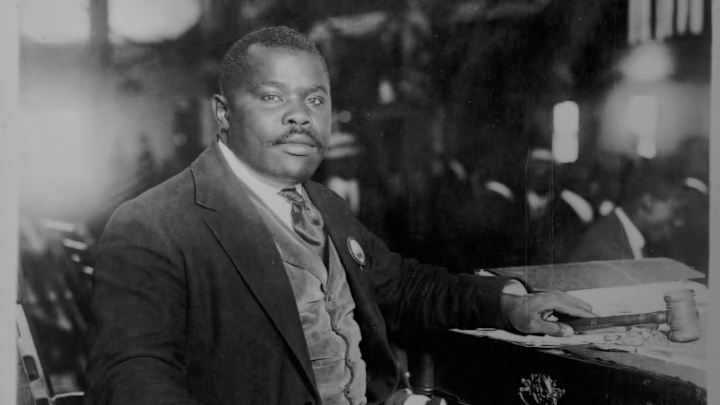Juneteenth arrives on June 19, and with it comes several of the traditions that tend to accumulate around celebrations. In addition to family gatherings, prayer services, and speakers, celebrants often look forward to certain menu items.
One dish in particular has a special—but sometimes unknown—meaning. It’s Marcus Garvey bean salad, which is made up of green, red, and black beans. Both the name and the color scheme are no accident.
Marcus Garvey was a Black nationalist leader from Jamaica who was active in the early 20th century. In 1914 he founded the Universal Negro Improvement Association and African Communities League, or UNIA, and drew attention for his uncompromising views on civil rights. Garvey argued for Black self-sufficiency, with wealth and resources independent of other cultures. His ambition was not to lobby for existing institutions to advocate for civil rights but for those institutions to be formed organically. He established the Black Cross Nurses that provided health care to Black communities and founded the Black Star Line steamship company, which offered transportation and resources to Africa.
After Garvey immigrated to the United States, his following grew to include hundreds of thousands of people, who together helped to ignite the civil rights movement that followed.
Not everyone agreed with Garvey’s views, especially those who preferred the status quo. The FBI had a file on Garvey, and a mail fraud conviction over a Black Star Line stock sale saw him jailed and then deported. But Garvey’s devotion to the Black community and his advocacy for prosperity struck a chord that had a lasting impact.
According to Martin Luther King Jr., Garvey was the “first man of color in the history of the United States to lead and develop a mass movement.”
History isn’t entirely clear on the origins of the bean salad named after him or who developed the recipe, but the choice of ingredients has a special meaning. The green, red, and black beans represent the colors of the African nationalist flag, a symbol of Garvey’s movement that was first adopted by the UNIA in 1920. (It’s also known as the Pan-African flag, Marcus Garvey flag, UNIA flag, Afro-American flag, or Black Liberation flag.)
Garvey had long lobbied for a flag to represent the movement because he felt it would create a political presence for the Black community.
Red was chosen to represent the blood shared and shed by Africans, black was associated with identity, and green was a reminder of growth and fertility in Africa.
There’s at least one variation of the salad that uses kidney beans, black olives, and green lettuce to represent the colors of the flag. Like most everything involved with Juneteenth, serving it is about more than just entertaining—it’s about remembering the many struggles of previous generations.
[h/t The Daily Meal]
A version of this story originally ran in 2021; it has been updated for 2023.
